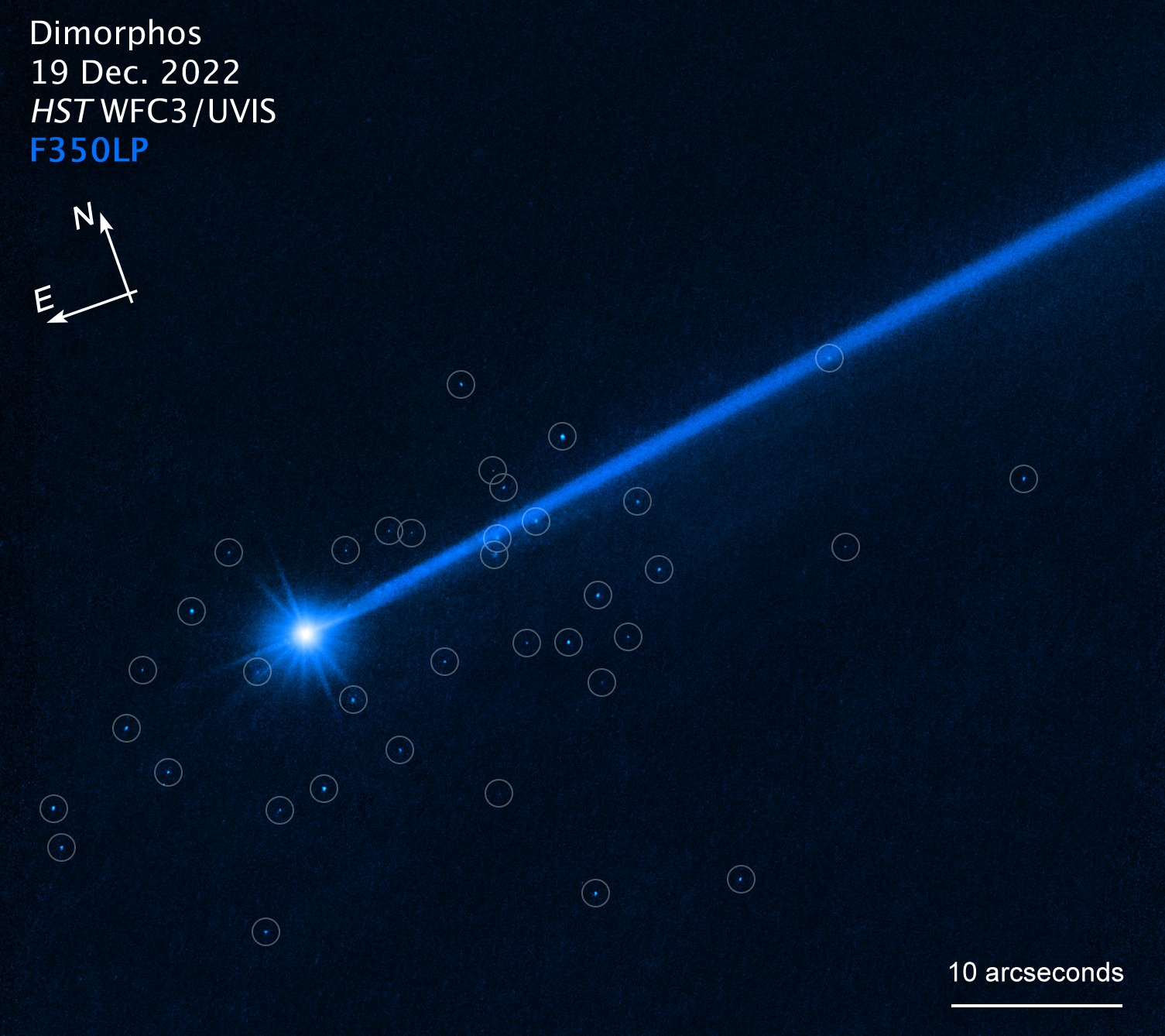Thanks to the amazing observations of the Hubble Space Telescope, scientists continue to be surprised by the NASA DART mission. This time, a swarm of boulders that formed around the asteroid became noticeable.

Last September, NASA launched a spacecraft directly into an asteroid. It was deliberately destroyed by a kinetic collision. But this sacrifice of the DART spacecraft (Double Asteroid Redirection Test) had a very important goal: it was NASA’s first step in developing an ambitious planetary defense system.
The goal of DART was to find out if being hit by a small asteroid named Dimorphos would change its orbit around the larger asteroid Didymos. The mission was successful. Since then, we have learned a lot about collisions of cosmic bodies and how exactly the futuristic mechanism of protecting the Earth can work in the future.
Information “from the other world”
On July 20, NASA announced that DART has again provided us with intriguing information “from the other world”. Using the powerful optics of the Hubble Space Telescope, astronomers discovered that when the probe collided with a Dimorphos, which occurred at a speed of about 22,530 km/h, a “swarm of boulders” was formed. It is quite possible, the agency says, that these fragments originate from the target asteroid.
“We see a cloud of boulders carrying mass and energy away from the impact target. The numbers, sizes, and shapes of the boulders are consistent with them having been knocked off the surface of Dimorphos by the impact. The boulders are some of the faintest things ever imaged inside our solar system,” explained David Jewitt, a planetary scientist at the University of California, Los Angeles, who is analyzing the DART mission.

According to NASA, the release of boulders could have been caused either by a so-called ejection plume formed as a result of a collision, or by a seismic wave that shook them off the surface. This is similar to hitting a loose rocky surface with a hammer, as a result of which small rocks will scatter freely over the entire surface.
With the speed of a turtle
As for the boulders, Jewitt and his colleagues found 37 near-asteroid rocks ranging in size from 0.9 meters to 6.7 meters across and a total mass of about 0.1% of the mass of the asteroid. These objects, as it turns out, are moving away from their source at a speed of just over 0.8 km/h, which NASA compares to “about the speed of movement of a giant turtle”.
Earlier we reported on how the telescope captured the tail of the asteroid Dimorphos.
According to NASA
Follow us on Twitter to get the most interesting space news in time
https://twitter.com/ust_magazine

